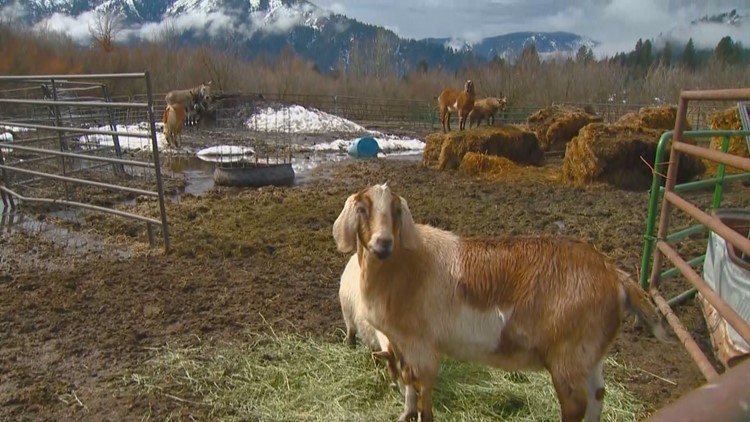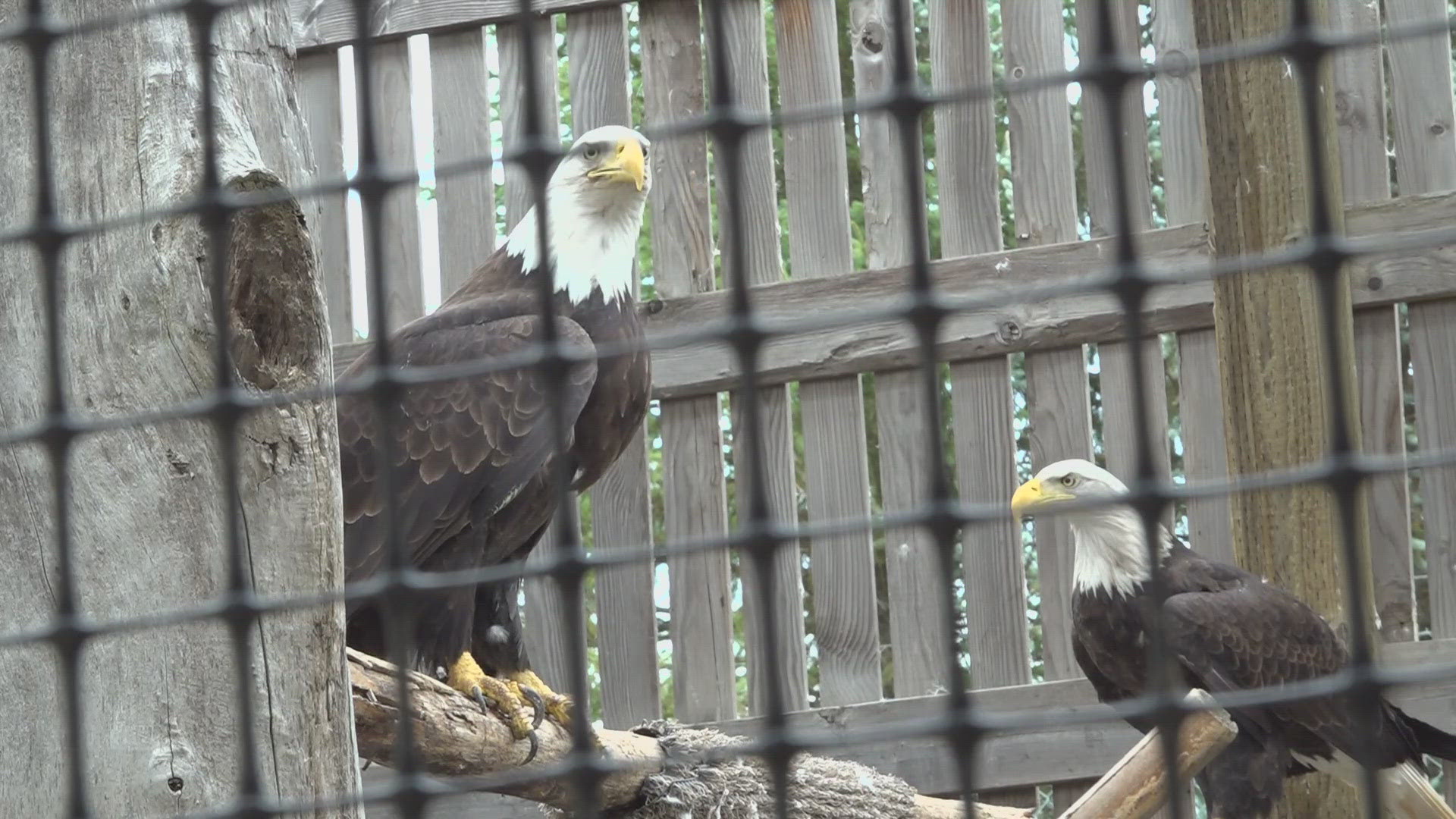COEUR D'ALENE, Idaho — By RALPH BARTHOLDT Coeur d'Alene Press
Pack horses are tried and true, and mules are proven hunting-gear haulers.
Hunting elk with a trio of domestic goats, though, is an acquired taste.
John and Nancy Clough of Dalton Gardens have joined a growing number of Western hunters who hike into the backcountry with a tribe of herd animals, outfitted with panniers, bumping against their backsides as they climb mountains, cross streams and settle in for a shot at a bull elk.
“Sometimes the elk are curious,” said John Clough, who along with his wife have for decades used bows and rifles to down sheep, elk and deer across the West.
“Sometimes they’ll spook an elk,” Clough told the Coeur d'Alene Press d. “You can’t really call them a decoy.”
After years of hard hunting, and packing game meat on their backs the Cloughs settled on goats to get to and from their hunting grounds.
A health condition prompted the move: John suffered from arthritis in his spine.
Instead of curtailing their hunting endeavors, the Cloughs — who are members of the Rocky Mountain Elk Foundation and the Wild Sheep Foundation — joined another group. They became goat-owning members of the North American Packgoat Association.
The couple raise three goats on one residential acre, and all they need to stow their goat gear and keep the animals fed and happy is a 10 x 16 shed that’s loaded with hay.
“Three goats on an acre is perfect,” Nancy Clough said.
When the couple opted to throw in with goats they realized the city had a covenance against the split-toed ungulates.
“No stallions, bulls, swine or goats,” Nancy, a nurse by trade, said.
She filed for a code change and the city council bought in.
Now several of her neighbors raise goats, and the Cloughs can be seen walking their trio through town on halters, or on nearby Canfield Mountain just to get them in shape for the elk-packing season.
The animals can pack 25 percent of their body weight — around 80 pounds — are quiet, hard working and eat on the fly. They travel as many as eight miles a day, fully loaded.
“They eat just like an elk or deer,” John said.
That means they browse and nibble along the way, and if temperatures remain moderate — some goats don’t handle the heat well — packing water to keep the goats hydrated is not an issue.
“They get most of their moisture from leaves and forbs,” Clough said.
Although sometimes they’ll sip from mountain streams.
The Cloughs estimate that it takes two light trips to pack out the meat from a bull elk, if the meat is taken off the bone, balled up and loaded into Nancy and John’s packs — and into the panniers attached to the saddles of their three goats.
“Two trips on us and two trips on the goats, instead of three heavy trips by ourselves,” John said.
But it takes a few years to get goats up to speed, and goat packers must raise the goats from kids, acclimate them to the wilds of North Idaho and the rest of the West before they become reliable pack animals.
“They really just need to learn trail etiquette,” Nancy said.
The Cloughs’ goats can be transported comfortably in the bed of a pickup truck, along with the rest of the hunting gear, but the Cloughs bought a miniature horse trailer to move their pack animals around.
The best goat breeds for packing are Alpines, Oberhasli and Lamanchas. And they must be neutered males. Having them hornless helps.
Those are the bare goat facts.
There are others.
“These goats have allowed us to hunt fairly aggressively,” Nancy said.
The animals are partially loaded with camping gear — and wear orange vests — as they head into the hunting grounds each autumn, carrying sleeping bags, tents stoves, food and water.
“You can make a pretty plush camp with 80 pounds of gear,” Nancy said.
And they are observant and predator savvy.
“They can hear or smell a bear or cougar way before you,” she said.
Twice in a half dozen years did the Cloughs’ goats attract wolves, but the canids just stood off and watched before leaving the troupe of hunters and pack animals alone.
Sometimes they spot elk before the hunters.
“They are really alert,” she said.
If goat hunting is gaining a toehold among regional hunters, there is also a movement afoot to ban goats from national forest land.
Federal officials want to keep pack goats out of national forests by adopting a ban into forest plans — The Nez Perce-Clearwater National Forest comment period on the matter ends April 20.
The ban is an effort to block Mycoplasma ovipneumoniae or “movi,” a pathogen carried by domestic sheep believed to cause outbreaks of pneumonia in bighorn sheep, from being transported to wild sheep herds.
Studies treat goats and sheep the same, which is objectionable to the packgoat association.
“Domestic goats are different than domestic sheep,” Nancy said.
The same study that bundled goats and sheep together showed that the goat strain of movi wasn’t fatal to wild sheep, the Cloughs said.
They and other association members are hoping to strike a balance on federal lands by having officials take a closer look at the studies they rely on to prohibit goats in the hinterlands.
“A lot of people who are getting older, who have bad knees, backs or hips, who have been outdoorsmen and women all their lives and don’t want horses,” those are the people most likely to tap into pack goats.
Keeping that population out of the forests is a questionable practice the Cloughs contend.
“We’re a small minority that is being disenfranchised from the national forest,” Nancy said. “It’s wrong unless you have the evidence.”



